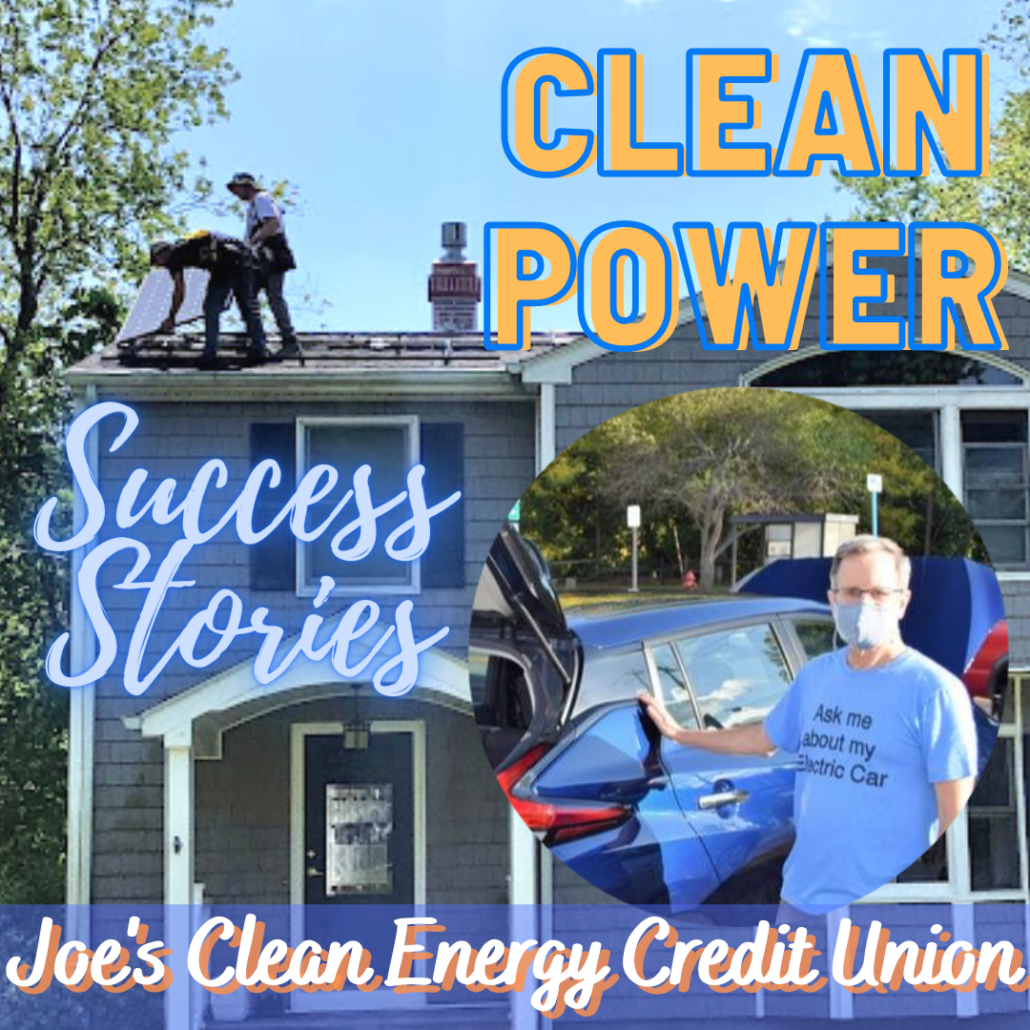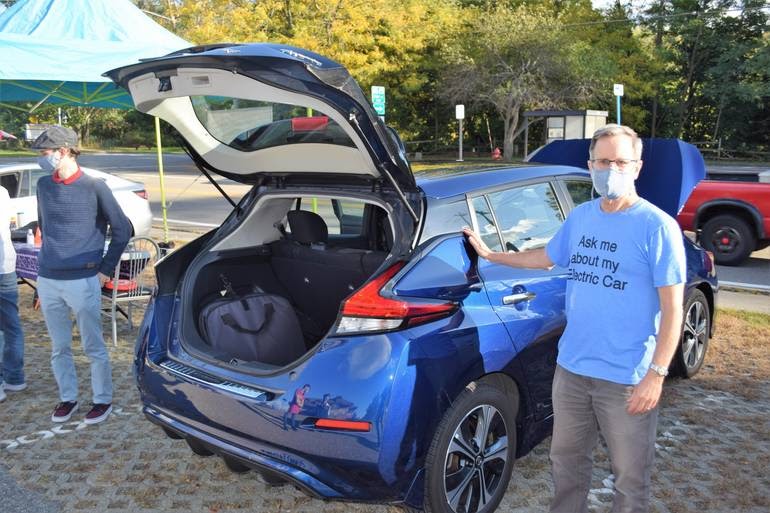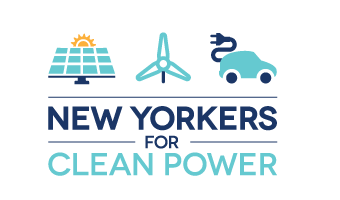Joe finds a Clean Energy Credit Union

I recently scheduled a free energy coaching session with Tom Konrad, after completing the 100% Renewable Energy Pledge. Because I’ve been working for years at eliminating fossil fuels in my home, I was pretty confident that I had covered all the bases.
- Electric car?
- Sealed and well-insulated home construction?
- Photovoltaic solar panels?
Joe showing off his all-electric Nissan Leaf at a September 2020 electric vehicle show in Mahopac.

I wasn’t at 100% yet, but I already had plans for the final steps to get me there. Or so I thought.
Tom asked about an area that I hadn’t even considered. My money. Where is my cash deposited? Where are my retirement funds invested?
I had already moved my checking and savings accounts to a credit union years ago. So I thought my checking and savings accounts were all set. Credit unions are member-owned, not-for-profit financial institutions. Like banks, they are also federally insured against losses. While credit unions are not-for-profit institutions, banks are generally concerned only with turning a profit. As a result, credit unions have lower fees, higher rates of return, and lower interest loans.
And credit unions tend to invest locally in their communities, while big banks are often invested in fossil fuels.
But Tom told me I could go a step further by moving my savings to the Clean Energy Credit Union. CECU has all the benefits of other credit unions, and it specifically makes loans for clean energy projects, while shunning fossil fuel investments. It’s all online too. (Need a loan for solar panels or other home energy efficiency projects? Check them out!)
After sealing and insulating his home, Joe also had a solar photovoltaic system installed.

But what about long term investments? If you own stocks or mutual funds, or have a retirement account, such as an IRA or a 401(k) account, you could be supporting the fossil fuel industry. If you’re fortunate enough to have an IRA or 401(k), you haven’t done your best for the planet if that money is supporting ExxonMobil. And there’s a good chance it is.
Tom is an investment manager and writer by day, and he kindly shared an article he authored, “Step by Step Fossil Fuel Divesting with Mutual Funds”. The links provided there led me to evaluations of various funds, and indicate the proportion of fossil fuel investment, if any. Over time, I’m slowly but surely divesting my portfolio from fossil fuels.
Going 100% renewable is a long journey, and like any long journey, it takes time and perseverance. Having access to New Yorkers for Clean Power’s Free Energy Coaching makes it a whole lot easier. It’s like having a guide to show you the way!


